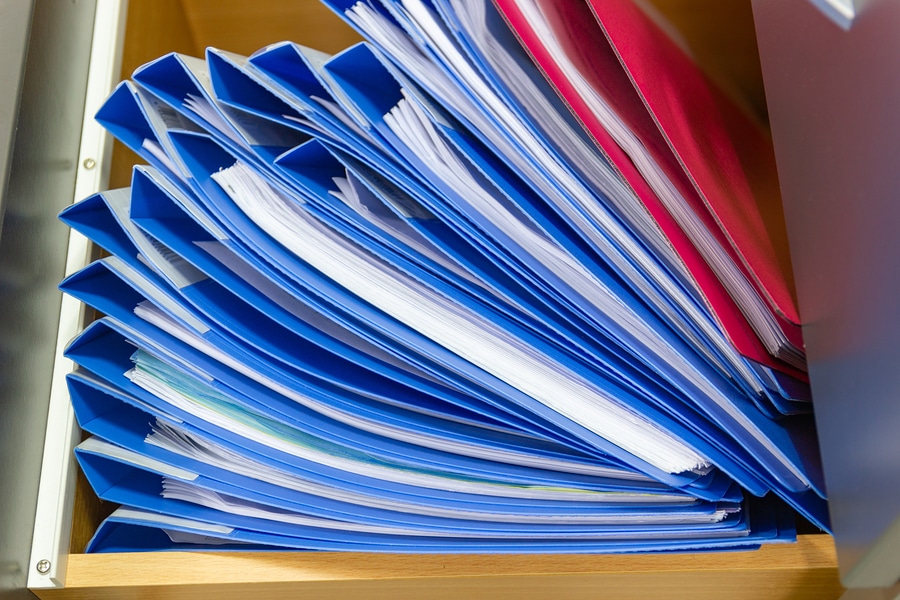How and Why You Should Develop a Document Retention Schedule for Your Business

Although many North Dakota businesses now rely on digital data, you may still produce a fair amount of hard copies in the course of operations. This leaves you with the unenviable task of protecting data on two fronts.
While most businesses have rigorous controls and security protocols surrounding protection of digital data – from firewalls and antivirus, to passwords and encryption, to employee training programs – you may not have the same standards in place for physical documents, even though they also contain confidential data. This is why it’s so important to develop a document retention schedule.
If you allow hard copies to pile up, filling filing cabinets, taking up space in warehouses, and littering employee desks, you open yourself up to significant risk of data theft, including both internal and external threats. With a proper schedule for document retention and destruction, you can minimize risk factors and gain other benefits, like freeing up office space, decreasing clutter, and reducing storage costs.
How should you go about securing hard copies and creating a smart document retention and destruction schedule? Here are a few strategies to consider.
Start with a Clean Desk Policy
The first thing you need to do is secure documents, and this means utilizing locked filing cabinets and storage areas, as well as implementing a clean desk policy that ensures sensitive documents are never left sitting on employee desks, out in the open, where anyone could see and/or steal them. A clean desk policy requires employees to safely store documents before leaving the office each day. As an added benefit, such policies tend to reduce clutter and increase productivity.
Understand Retention Requirements
It’s important to understand applicable rules, regulations, and guidelines regarding retention of specific documents, like employment records, tax documents, original contracts, and so on. What you’ll find is that there is no shortage of documents you need to retain, at least for a while, and there are a few that you should probably hang onto in perpetuity.
That said, there are also plenty of documents you can get rid of, and those that must be saved can be disposed of at schedule times. The IRS recommends, for example, that you retain financial records and tax documents for anywhere from 3-7 years, depending on circumstances.
Some records, like contracts, lease agreements, operation permits, stock certificates, and so on should be kept as original hard copies indefinitely. Even if they’re no longer active, you may need them as proof if you encounter legal disputes down the line. Creating your document retention schedule is a complex affair, but once you have internal policies and practices in place, it should be relatively straightforward to implement.
Work with a Trusted Document Shredding Service
When it comes time to dispose of documents, you want to make sure the process is handled in a secure manner. A mobile document shredding service will provide you with locking bins for in-office use, ensuring that hard copies aren’t left out in the open, and show up for scheduled collections.
Best of all, you can watch as your documents are shredded on-site, so you know the job is done right. With the addition of a shred-all policy in place, you’ll ensure that no documents slip through the cracks and accidentally get tossed in the trash.
If your North Dakota business is seeking a certified ITAD service provider to manage scheduled document shredding, contact the experienced professionals at SEAM today at 605-274-7326 (SEAM) or online to request a quote.
SEAM provides IT recycling and data destruction services including onsite shredding and hard drive wiping to South Dakota, North Dakota, Minnesota, Iowa, and Nebraska.
Schedule a pickup or contact us for more information.





